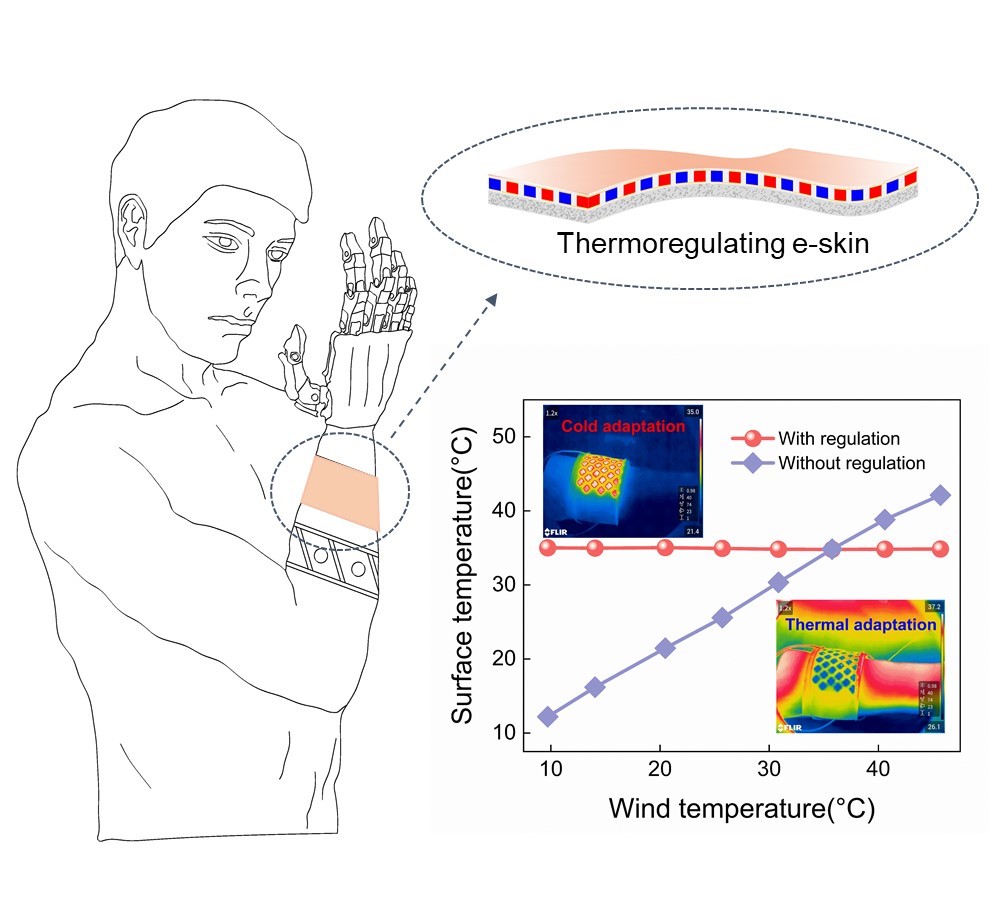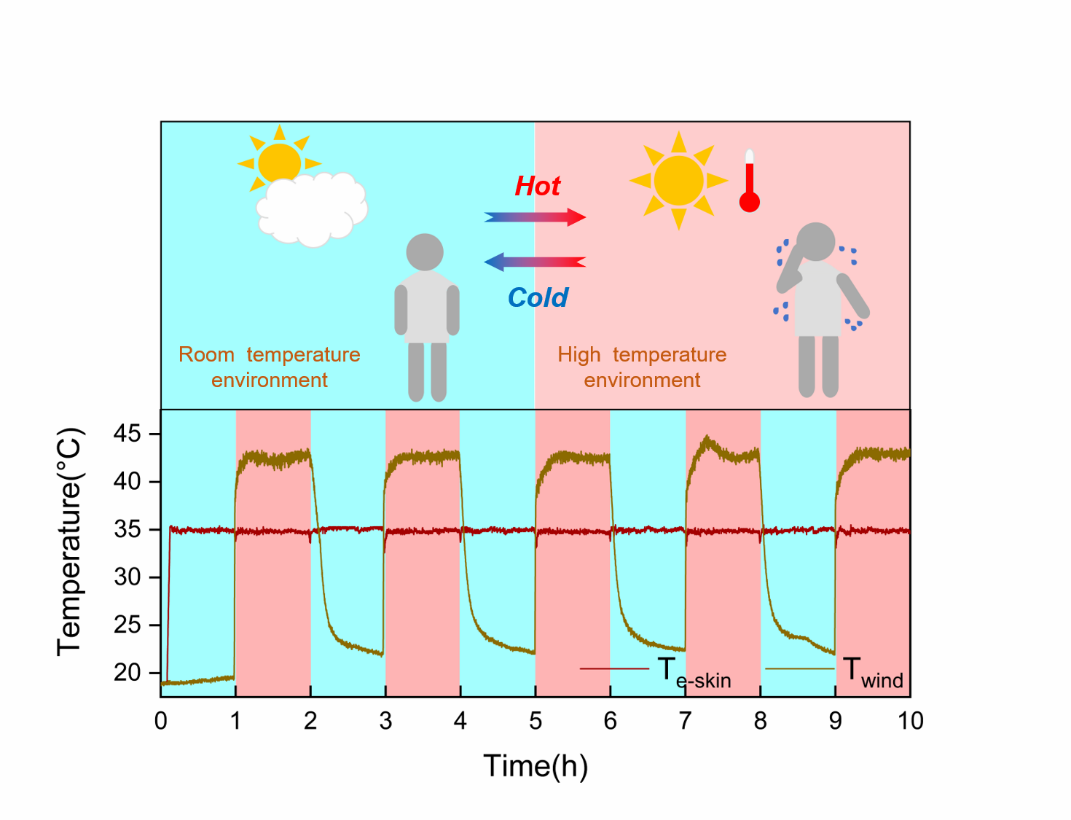A healthy human body has a full secretory system and a mechanism for producing heat that can maintain the body temperature at or near 37°C regardless of the environment. Due to material and structural constraints, traditional e-skin cannot keep a constant temperature in varying settings like the human body.
Instead, it is more like poikilotherms, whose temperature is passively tied to the environment’s temperature. Users could have adverse psychological effects due to the absence of thermoregulating e-skin. For instance, the temperature difference between the human body and e-skin that is bonded to the surface of a prosthetic limb can cause the human body to feel uncomfortable, which will decrease the prosthetic limb user’s acceptance of the device. Therefore, the e-skin’s thermoregulating design is essential to greatly enhance the comfort and confidence of prosthesis users, and also could further make robots have a thermoregulating e-skin.

Professor Weishu Liu’s research group from the Department of Materials Science and Engineering at the Southern University of Science and Technology (SUSTech) has recently made remarkable strides in its study of the bionics of electronic skin.
Their research, entitled “Wide-Temperature Range Thermoregulating E-Skin Design through a Hybrid Structure of Flexible Thermoelectric Devices and PCM Heat Sink,” was published in Ecomat, a high-level comprehensive journal jointly organized by the Hong Kong Polytechnic University (PolyU) and Wiley.

Figure 1 temperature adaptation of the e-skin
Based on a flexible thermoelectric device and phase-change material heat sink, Prof. Liu’s team created a thermoregulating e-skin that can be used to modulate the temperature of prosthetic surfaces to improve user comfort in diverse temperature situations. The adaptable thermoelectric device made of an island-bridge structure can be attached to the prosthesis surface as a temperature source to regulate the temperature of the e-skin surface and has a good bending ability.
The heat produced by thermoelectric devices can be stored in a pool inside the phase change material that is filled with a high thermal conductivity foam. This e-skin that regulates temperature can adapt to different temperatures just like a human body. In low-temperature environments, it can be heated, while in high-temperature environments, it may be cooled. The e-skin’s specific power expenditure at 0.5 m/s wind speed and 10°C wind temperature is 8.53 mW·cm−2·°C−1.
The e-skin uses 7.3 mW·cm−2·°C−1 in terms of specific power expenditure at 0.5 m/s wind speed and 45°C wind temperature. The e-skin also simulates the thermostatic function of human skin, maintaining a comfort zone of 35°C surface temperature over a broad ambient temperature range of 10-45°C. The e-skin can keep the surface temperature at the desired temperature for two hours when the surrounding temperature is below 35°C. The e-skin can hold the surface temperature at 35°C for about one and a half hours under a wind temperature of 40°C. Still, its constant temperature time is limited when the ambient temperature is higher than 35°C.

Figure 2. The e-skin maintains flexible temperature regulation in cyclic low and high-temperature environment tests
The e-skin’s capacity to regulate temperature well offers a fresh perspective on the simulation of intelligent prosthesis temperature in the future, which is crucial for enhancing amputees’ quality of life and advancing robot bionics research.
Ph.D student Pengxiang Zhang is the first author of this paper. Prof. Weishu Liu is the corresponding author, while SUSTech is the only corresponding unit of the paper. Biao Deng, Kang Zhu, Qing Zhou, Shuangmeng Zhang, and Wenting Sun from Prof. Liu’s research group and Prof. Zijian Zheng from PolyU also contributed to this study.
The research was supported by the Innovation Project of Guangdong Province, Shenzhen Science and Technology Program, Hong Kong Polytechnic University, and the Research Grants Council Senior Research Fellow Program.
Paper link: https://onlinelibrary.wiley.com/doi/10.1002/eom2.12253
To read all stories about SUSTech science, subscribe to the monthly SUSTech Newsletter.
Proofread ByYingying XIA
Photo By